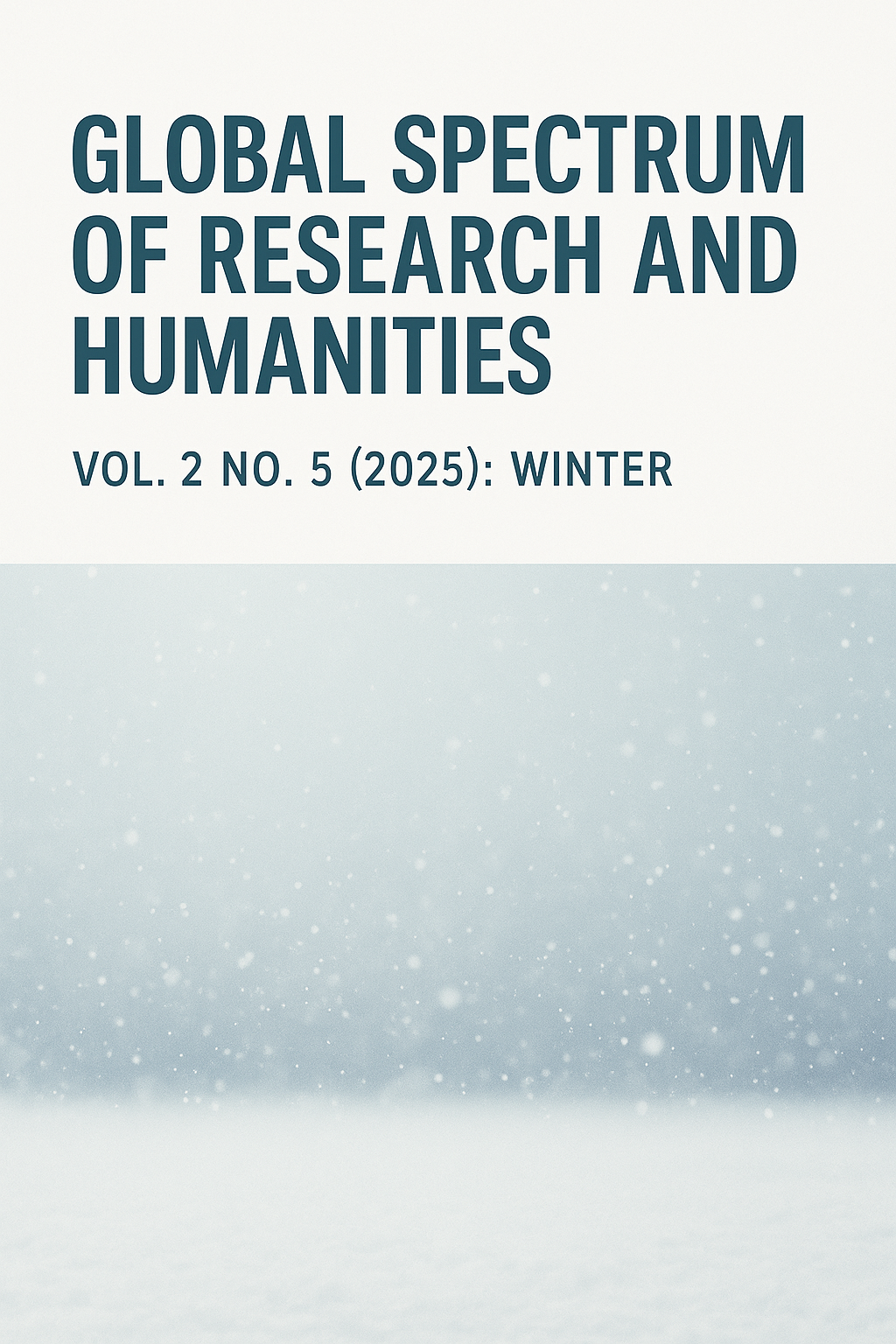Color-Indicating Idioms in English: Semantics, History, and Syntactic Patterns
DOI:
https://doi.org/10.69760/gsrh.0250205010Keywords:
color idioms, conceptual metaphor, semantics, idiomatic usage, cognitive linguistics, etymologyAbstract
This study examines the semantic structure and literary usage of English idioms containing color terms (e.g. green with envy, see red, feel blue). Drawing on cognitive semantics, etymological dictionaries, and literary examples, we analyze how colors metaphorically encode emotions and concepts. We compiled a representative set of color idioms from dictionaries and corpora, tracing their origins and meanings. Consistent conceptual metaphors emerge: for example, anger is linked to red, sadness to blue, envy to green, and cowardice to yellow. Shakespeare’s “green-eyed monster” (envy) and modern “green with envy” demonstrate this mapping. Cognitive theory highlights that idioms often rely on conceptual metaphors (e.g. ANGER IS HEAT/RED). We find that many idioms follow distinct syntactic patterns (e.g. “be color with X” or “see/feel color”). Literary examples (from Shakespeare to contemporary novels) show these idioms in context, reinforcing their figurative sense. Our results suggest a coherent mapping between color terms and semantic domains grounded in cultural and physiological associations. The persistence and productivity of color idioms in English underscore how sensory imagery conveys abstract ideas. This analysis contributes to understanding idiom motivation, historical development, and the interplay of metaphor and language in literature and cognition.
References
Dictionary.com. (n.d.). Feel blue. Dictionary.com. Retrieved October 22, 2025, from https://www.dictionary.com/browse/feel-blue
Merriam-Webster. (n.d.). Blue devils. Merriam-Webster.com dictionary. Retrieved October 22, 2025, from https://www.merriam-webster.com/dictionary/blue%20devils
Merriam-Webster. (n.d.). See red. Merriam-Webster.com dictionary. Retrieved October 22, 2025, from https://www.merriam-webster.com/dictionary/see%20red
Mohr, C., & Jonauskaite, D. (2022, February 8). Why links between colors and emotions may be universal. Psychology Today. Retrieved October 22, 2025, from https://www.psychologytoday.com/us/blog/color-psychology/202202/why-links-between-colors-and-emotions-may-be-universal
Negro Alousque, I. (2011). A semantic and pragmatic analysis of English colour idioms. Babel – AFIAL, 20, 149–162.
Peck, G. (2015, March 13). Green: lucky or unlucky? Chicago Public Library Blog. Retrieved October 22, 2025, from https://www.chipublib.org/blogs/post/green-lucky-or-unlucky/
Sadiqzade, Z. (2024). The Use of the Detective Genre in 19th-Century English Prose. Acta Globalis Humanitatis Et Linguarum, 1(1), 56-66.
Sadiqzade, Z. (2025). The Linguistic Expression of Emotion: A Cross-Cultural Analysis. EuroGlobal Journal of Linguistics and Language Education, 2(3), 42-54.
Sadikhova, S., & Babayev, J. (2025). Challenges Encountered in Translation of Culture-bound and Subject-specific Terminology While Using Google Translate. EuroGlobal Journal of Linguistics and Language Education, 2(3), 119-126. https://doi.org/10.69760/egjlle.2500203
Mammadova, I. (2025). Cognitive and Pedagogical Dimensions of Translation: A Theoretical and Practical Exploration. Acta Globalis Humanitatis Et Linguarum, 2(1), 213-220. https://doi.org/10.69760/aghel.02500127
Downloads
Published
Issue
Section
License
Copyright (c) 2025 Global Spectrum of Research and Humanities

This work is licensed under a Creative Commons Attribution-NonCommercial-NoDerivatives 4.0 International License.




